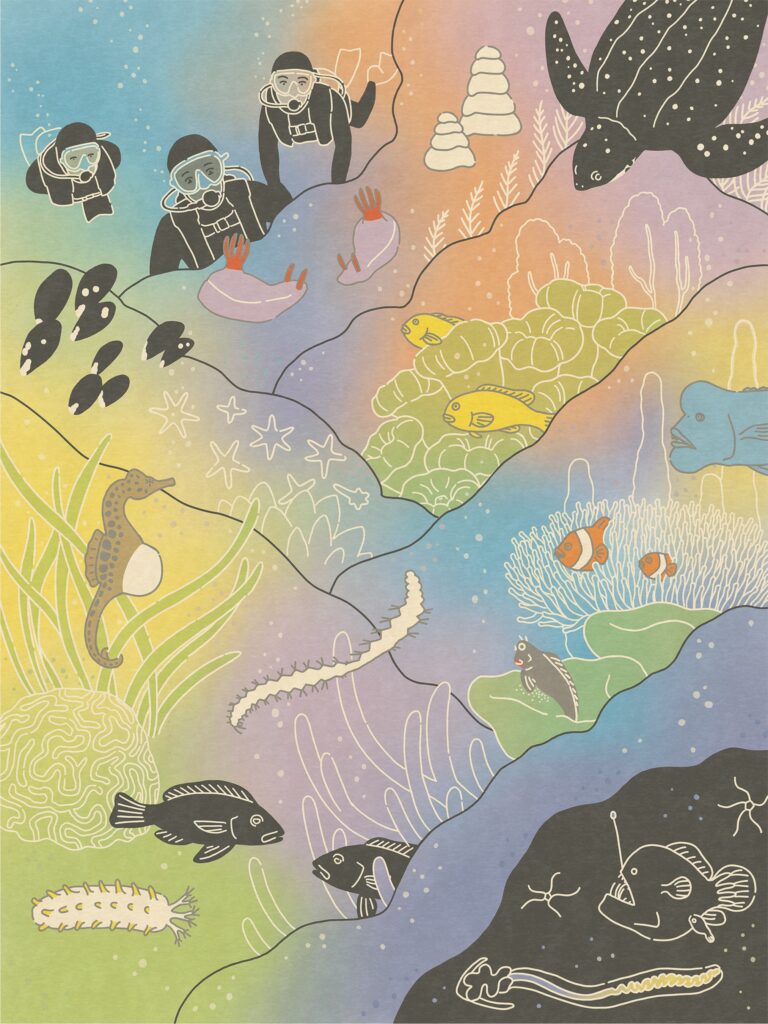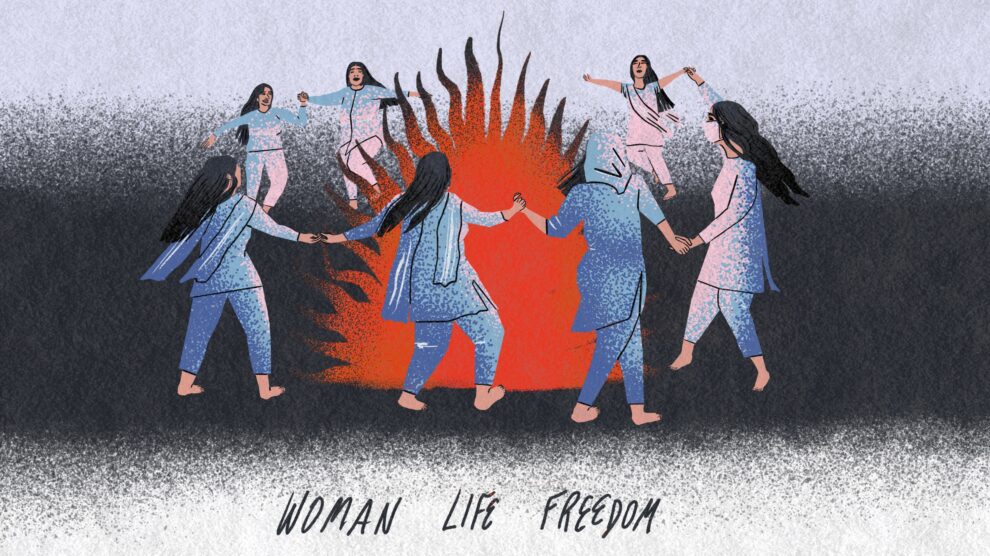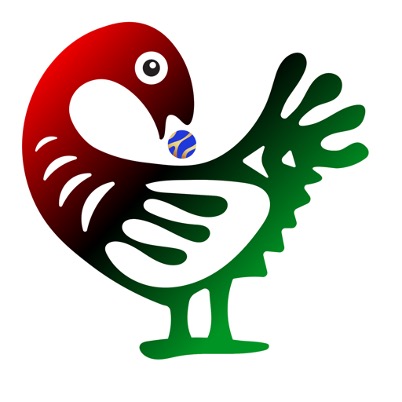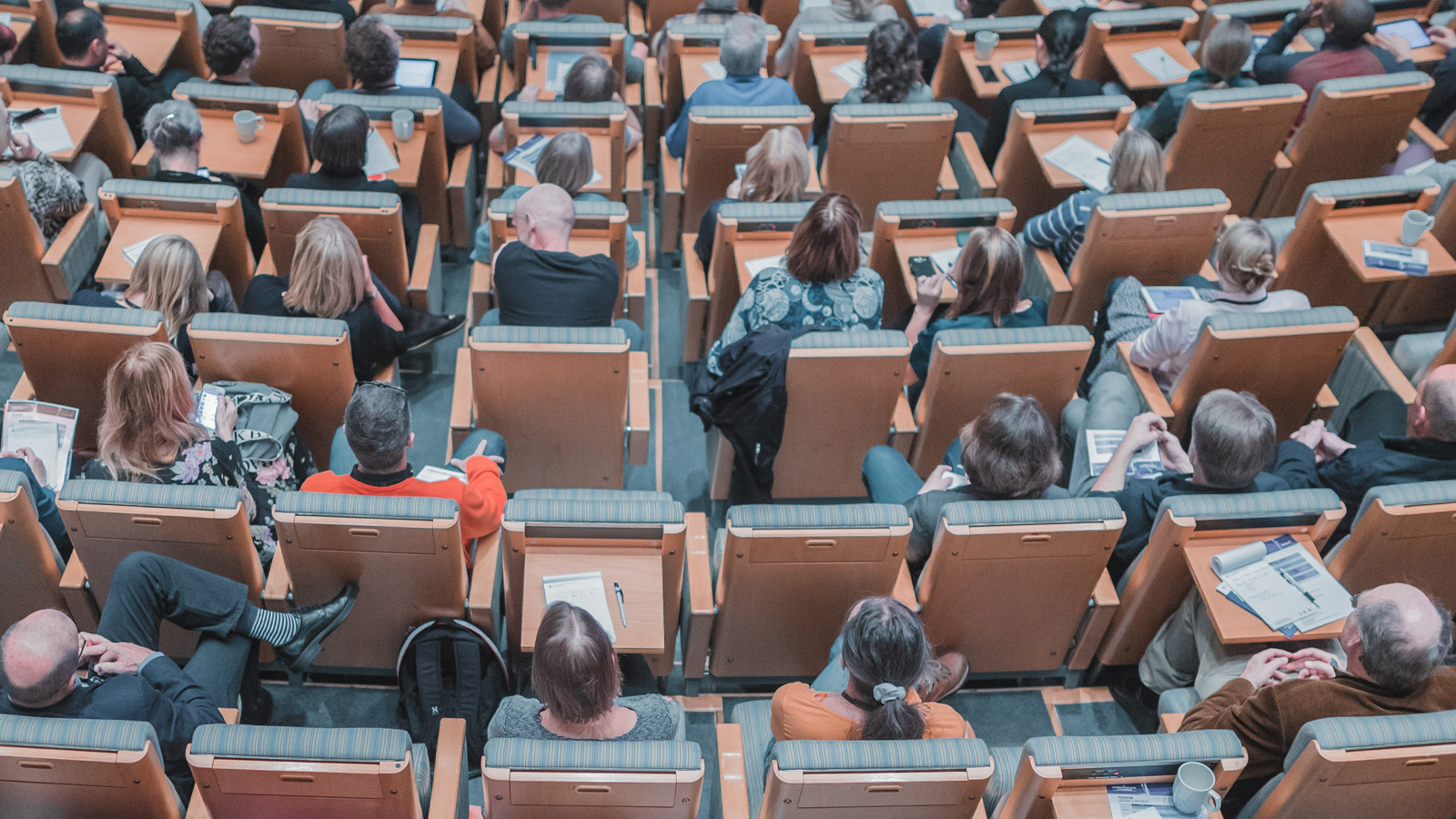Inclusive Biology Evolves With Students
By River Suh
Volume 26, no. 1, Gender: Beyond Binaries

Are we really rethinking representation or merely memorizing pronouns? In the face of ongoing legislative attacks against transgender youth and corporate rainbow-washing, educators continue the struggle to foster safe learning environments for all members of the next generation.1 Biology education can teach children that researchers have long recognized biological markers that go beyond fixed, binary categories. Having seen the research data, students can critique socioscientific constructions of mind, brain, and behavior in ways that can challenge science’s historical notoriety as a tool for pigeonholing individuals. By negotiating their discourse on gender and sex using scientific evidence, students can co-regulate inclusive behavior, integrate science practices into their identities, and apply science to personally relevant issues.2
Building Inclusive Connections Through Science
“Learning about queer non-human behavior and bodies opens the door to asking questions students might not get to elsewhere.” – DD, 30s, visiting my embryology lesson
Many teachers unconditionally accept their students, without needing to understand or anticipate every identity, and biology class can reinforce that unconditional acceptance through acknowledging a myriad of bodies and behaviors. The dominant narrative that censors or pathologizes deviation already triggers an identity threat because no one is “default, average, normal.”3 Science class can instead enrich a student’s perspective on how science and society treat variation. A lesson can recognize diverse inheritance structures and caregiving relationships or simply describe trait variation sans human value.4 Examples like epigenetics and organisms that change physical sex traits based on touch, temperature, and feed give space for reflecting on personal questions that may be too risky to ask.5 Through scientific argumentation, quantitative analysis, and critical integration of data, students can express their own complex narrative of gender and sexuality.
In science class, exploring new ideas and embracing uncertainty fosters personal growth and identity resilience. Biology education can move beyond simplistic binary models of sex and sexual behavior and instead acknowledge the diverse and intricate realities of a young person’s experience. As a science teacher, I continuously update my curriculum and instruction, but I could still be dictating biases about diversity that I inherited from essentialist and tokenizing models. One way I check myself is by regularly surveying students to ensure an inclusive and scientifically accurate biology class. By encouraging students to critically evaluate how scientific data on sex and gender affects them, teachers can render science another empowering tool for navigating identity development and challenging the status quo.
Science teachers, especially under hostile political scrutiny, can effectively leverage scientific concepts of precision, self-evaluation, and multiple perspectives to foster inclusive and critical engagement with science among students. Challenging self-perceptions of ‘innate talent’ can foster gender equity in adult professional life, while exercises that value multiple valid answers and revisions can stimulate creative engagement. Students can use the tools of science and engineering, like graphical analysis, to revise entrenched myths about Mendelian dominance and recessiveness, such as polygenic eye color or PTC tasting.6 Even making subtle, function-focused shifts in language or investigating Latin root words can suffuse a classroom with more empathy.7 Annual research suggests inclusive approaches may significantly decrease the rate of suicide among LGBT students.8
A science class that acknowledges their agency and their own experiences can help students integrate scientific knowledge into their developing identities.
Students can also share the cognitive load of deciding what inclusion looks like through classroom discourse and regular anonymous feedback. Students can begin by translating culturally familiar terms into biological measurements, such as using race as cultural shorthand for melanin quantity, age group for overall sexual fertility, or gender for behaviors and bodies. Learning how humans share genetic information regardless of national boundaries or cultural labels can help students unpack how they view other things like race or gender in science and society.9 As students’ understanding of biodiversity deepens, they also gain a better grasp of the limitations of applying rigid categories to human beings.
Challenging Stereotypes with Affirming Biology
“If we don’t learn about [sex], someone may die! Because they won’t know if something’s wrong.”
– KD, high school student
A biology classroom can also help students explore how science can be used to challenge harmful stereotypes about intersex bodies, non-heterosexual behavior, and gender roles.10 By incorporating diverse examples of sex, gender, and sexual behavior, students engage in meaningful socio-scientific discourse using biological evidence. In a class that normalizes data analysis of hormone levels, same-sex behavior, intersex bodies, and differences in sex development, students who observe or experience these phenomena may find their cognitive load redistributed. A science class that acknowledges their agency and their own experiences can help students integrate scientific knowledge into their developing identities.11 By discussing the application of science to mind, body, and behavior, students are encouraged to think critically about how their classroom learning extends to their understanding of themselves within broader society.
“Do scientists just ignore if you have half- or transgender siblings like me, or gay parents? Do I get lumped into leftover people?” – KS, high school student
For students already testing their core identity amid new ideas, omitting real experiences from science, such as those related to having “non-traditional” family, can further intensify their cognitive load. Instead of disengaging from an identity-flattening reading, students can critique the application of more inclusive pedigree chart in accurate phenotype analysis.12 Labeling gamete providers as “sperm/egg-givers,” or “bio-dad/moms,” recognizes many different family relationships. Examples of non-biological parenting behavior may also facilitate conversations about blended families and relationships that are neither cishet nor nuclear. Introducing a diverse gender showcase at an appropriate grade level can expose students to caregiving structures that foster a broader comprehension of familial relationships, such as the groove-billed ani bird’s communal nest with up to 12 adult caretakers for 20 eggs.13
Other organisms donate eggs to a non-biological parent to feed, gestate, and single-parent.14 A biology lesson about bird parenting strategies offers opportunities to reflect on diverse gendered roles and relationships, recognizing and normalizing a range of lifeways and families of choice. Discussions can challenge students on the appropriateness of using pejorative terms like “cuckolding” or “brood parasitism” in scientific texts about oystercatcher triple parenting or extra-pair paternity.15 Even imperfect examples still offer more agency to students to critique what inclusion means in messaging and practice.
Biology offers numerous examples of cooperative resource management, interspecies resource and genetic sharing, as well as various forms of same-sex and polygynous behavior. These examples challenge the prevailing myth that whoever survives a polarizing, heterosexual, ultracompetitive sexual contest is named the “fittest”. When learning about successful mating strategies that challenge their assumptions of masculinity—such as gay, straight, bisexual, and asexual bighorn rams, the angler fish’s permanent fusion, the female spotted hyena’s phallus, and other examples—students reassess popular assumptions about gender roles and biological determinism.16 Some herbivores eat meat, body changes are complicated, some species reproduce through parthenogenesis or self-fertilization, while others are single-sexed and polyamorous with other species.17 Unquestioningly relying on binary models limits our understanding of biodiversity and ourselves.
Oversimplifying Science Reinforces Biases and Confusion
“I have an intersex friend. Why don’t they teach us about intersex people and gender earlier? That would make it so much less confusing.” – EO, high school student
An expired, reductionist, and static vision of biology has been presented to a US population that increasingly acknowledges its own ethnic, gender, and sexual orientation diversity in all age groups and in elected government positions.18 Science education may have institutionalized scientific knowledge under an oppressive system, but students can use scientific research to challenge this mismatch between reality and academic messaging. By grappling with the application of science in authentic contexts using evidence-based reasoning, students develop the skills to critically challenge sources of misinformation they may encounter in the future. Engaging in inclusive discussions within a biology classroom that embraces diversity can enrich students’ understanding of their own role in the scientific endeavor and its reciprocal importance in their adult lives.
When science undermines dignity, it can lose its authority and relevance for many students, so critiquing formal scientific models of sex morphology and gendered behavior helps students recontextualize biased historical observations and synthesize a more precise understanding. Traditionally, Eurocentric science defers responsibility for bias by decontextualizing physical evidence to create generalized explanations. White supremacists exploited this approach by inventing evidence of racial categories and disguising subjugation as “objective science.” Many historical atrocities have weaponized scientific objectivity for genocide, racist photography, and early gynecological and medical experimentation.19 Inclusive biology teaching can emphasize the importance of combining compassion and accuracy, and of recognizing human variation and dignity in science education.
A compassionate, student-driven scientific pedagogy has the potential to empower individuals to address future global challenges on their own terms.
Within this history of science, researchers have already classified myriad body, gender, sexual behavior, and sex chromosome combinations. My high school students often express surprise that researchers have spent years attempting to explain why same-sex behaviors continue to be frequent and advantageous for nearly 1,500 different animal species.20 In some species, gay parents have more offspring surviving to adulthood (sometimes 50% more).21 Students can analyze the persistent evolutionary advantages of bisexual behavior in conversations that normalize different identities and create more space for empathy and inclusion.22 The monolithic myth of monogamous, heterosexual, life-long cisgender reproductive dyads contradicts how for much of human history, bisexual behavior was not associated with a specific identity, and modern families interweave many relationships. Many cultures across the world have embraced same-sex behavior and gender fluid identities, including hijra, Māhū, Muxe, Winkte and Two-Spirit, Ninauposkitzipxpe, Takatāpui, Burrnesha, Quariwarmi, Bakla, acault, and more.23 As early as the 1930s, the Institut für Sexualwissenschaft (led by an out gay Jewish doctor) provided birth control and gender-affirming care, advocated for LGBT rights, and coordinated gynecology conferences.24
Biology teaching can embrace curiosity for biodiversity instead of reciting normative commandments. Teachers can present diverse examples of gendered behavior, sexual relationships, and morphology. Students can evaluate the biological data and construct their own explanatory models. Demonstrating environmental effect on gene expression helps complicate essentialist and deterministic narratives about the immutability and purpose of the body. A lesson classifying diverse animal reproductive strategies into binary survival categories inspires conversations about oversimplifying the complex reality of biological diversity.25 A lesson that unpacks Olympic “sex verification” can spark debate about the legitimacy of using biological proxies to impose strict gender categories.26My own high school students have said that until science reaches a clearer consensus, we must respect an athlete’s stated gender instead of reducing them to physical features. Encouraging students to evaluate the inclusiveness of competing scientific models can prevent their abuse, encourage critical thinking, and contextualize emerging scientific evidence.
Biology for All Bodies
“Biology class should teach us about gender, sex, and sexuality because not everybody has the same sex ed teacher.” – AR, high school student
Many of my students have turned to biology class as a trusted source of support for addressing the needs of their loved ones, such as their mothers, girlfriends, and transgender siblings, because they find their own sex education inadequate.27 Through their questions, we can demystify common and biologically normal issues like miscarriages, spontaneous abortion (20% of confirmed pregnancies), implantation failure, ectopic pregnancies, and other related experiences.28 They appreciate that science is one of many options for confronting challenging and confusing change.29
When students see how knowledge systems differ on conceptualizations of sex, gender, and behavior, they begin to accept that everyone’s understanding is unique. If scientific understanding can be incomplete, then everyone still has more opportunities to learn, and no one has the final say on anyone else’s gender. When they learn that life had to evolve sex, that gametes like eggs and sperm are actually scientifically labeled by size, or that species can temporarily change gonads, students begin to wonder how scientific descriptors might affect how humans are valued. After an activity to trace the interactions among chromosomes, hormones, traits, and environmental factors, students have stated they are less worried about puberty because they can see the complex and changing span of potential bodies and identities.30
“Biology class has made me less worried about puberty. I notice there’s a whole range of ways to develop. Even if they’re confusing and complicated, that just tells me there’s always more to learn.” – JC, high school student
A gender-inclusive biology class can support children in navigating puberty and other changes by exploring the functional intricacies of diverse body development. For example, hormones begin to shape genitalia separately and long before the brain begins to change in recognizably “gendered” ways, implying a splendid array of permutations of mind, body, and behavior.31 Engaging my high school students in sequencing cellular development from embryo to neurulation using modeling clay has fostered their curiosity about intricate biological processes. Tracing how chromosomes actually act on hormones and physical traits invites conversations about how the “scientific standard” describes human difference. Even knowing there is always more to learn about puberty has equipped them to navigate this transformative human stage with more confidence.
Today’s students (hopefully) learn that variations in sperm and egg formation from meiotic nondisjunction and recombination contribute to genetic variation often critical to evolutionary processes and species survival, despite sexual reproduction’s many risks. Nondisjunction during this process can affect the timing of gene expression, hormone receptor formation, physical trait development, behavioral onset, and cognitive development.32 Normalizing one of many biological processes shows students with XXX or X-null chromosomes a neutral, non-pathologized origin story.
Learning about different bodies and how they function can provide a sense of security and help prevent health crises that disproportionately affect minorities. How can we model consent, equity, and inclusion without acknowledging the profound impact that gender and sexuality have on student learning? Enriching our biology classes with diversity in gender, body, sexual behavior, and cognitive perspective also welcomes healthy conversations about puberty and centering the needs of marginalized students to create more inclusive classrooms.33
Students with differences in sex development (DSDs) deserve to tell their own stories, to be respected, and to hear affirming language in schools. After years of complaints from intersex patients and families, two major hospitals in 2020 promised to stop surgery on babies without their consent, but their apologies chose words frequently used to silence victims, such as “normalizing” or “historic standard of care.”3434 Presently, educational content including intersex people still focuses on trauma without providing useful details about sexual health and bodies, and Individualized Education Plan (IEP) meetings meant to support the student sometimes begin with defining the deficits behind their so-called “intersex disorder.”
Rather than teaching students to accept the scientific status quo, teachers can guide them in questioning how science shapes our understanding of reality and variation. If my student asks to be called “it” or “em,” my response should not counteract good science learning. Acknowledging life’s complexity through a large collection of functionally- and morphologically-specific examples keeps students curious about the huge variety of ways to exist, thrive, and be playful with language. Perhaps their questions and answers will give some hint to the future they build, when we ourselves ask them for answers.
Meet the contributor:
River Suh is a high school biology teacher and instructional coach committed to empowering others to develop and raise their own voices. They have a BA in human evolutionary biology (Harvard), a JD (Boston Law), and a MA in Education (Stanford GSE). They are passionate about developing student inquiry, agency, and confidence through solving problems in a welcoming learning environment. They specialize in integrating student-collected data science, biology & physiology, and socio-emotional learning.
Relatedly from the SftP Archives:
In 1984, Barbara Beckwith wrote “How Magazines Cover Sex Difference in Research”, in which she outlined how the popular press covered research on biology and gender roles and described how “such coverage panders to conventional sex-role prejudices by telling readers “science” supports their biases.” Popular magazines use genes-and-gender theories to prop up the status quo. Suh, in their article, addresses a similar problem in biology education which is falling short in teaching young people about gender, sex and sexuality’s complexities, perpetuating societal biases by fabricating justifications for them, much like the magazines mentioned in the Beckwith article. While Beckwith’s article limits itself to men and women, River Suh’s article goes beyond these gender binaries and makes a case for biology education that is inclusive.
Notes
- M. Shelley Thomas, Shantal Crosby, and Judy Vanderhaar, “Trauma-Informed Practices in Schools Across Two Decades: An Interdisciplinary Review of Research,” Review of Research in Education 43 no. 1 (2019): 422–452, https://journals.sagepub.com/doi/full/10.3102/0091732X18821123.
- Russell A. Barkley, “The important role of executive functioning and self-regulation in ADHD,” accessed June 13, 2023, http://www.russellbarkley.org/factsheets/ADHD_EF_and_SR.pdf.
- Todd Rose, “When U.S. air force discovered the flaw of averages,” Toronto Star, Jan. 16, 2016, https://www.thestar.com/news/insight/2016/01/16/when-us-air-force-discovered-the-flaw-of-averages.html.
- Gayby Baby Project, “Diverse Families Toolkit,” Lesson, GenderInclusiveBiology.com, November 23, 2020, https://www.genderinclusivebiology.com/newsletter/gayby-baby-project.
- Alex Maes, “Differences in Sex Determination Investigation,” Lesson, GenderInclusiveBiology.com, May 16, 2022, https://www.genderinclusivebiology.com/newsletter/differences-in-sex-determination-investigation.
- Sarah-Jane Leslie et al., “Expectations of Brilliance Underlie Gender Distributions Across Academic Disciplines,” Science 347, no. 6219 (2015): 262-265, https://www.science.org/doi/10.1126/science.1261375.; Annie Jamieson and Gregory Radick, “Putting Mendel in His Place: How Curriculum Reform in Genetics and Counterfactual History of Science Can Work Together,” in The Philosophy of Biology: A Companion for Educators (History, Philosophy and Theory of the Life Sciences Book 1), ed. Kostas Kampourakis. (Dordrecht: Springer, 2013): 577–595. https://doi.org/10.1007/978-94-007-6537-5_25.; John H. McDonald, “Myths of Human Genetics” (Baltimore, MD: Sparky House Publishing, 2011), 34-36; 1-5.
- River Suh, “Language Guides,” Gender-Inclusive Biology, December 23, 2019, https://www.genderinclusivebiology.com/bettersciencelanguage.; Sam Long, “LGBTQIA Science/STEM Etymology,” Gender-Inclusive Biology, December 9, 2019, https://www.genderinclusivebiology.com/newsletter/lgbtqia-sciencestem-etymology.
- Amrit Thapa et al., “A Review of School Climate Research,” Review of Educational Research 83, no.3 (2013): 357–385. https://doi.org/10.3102/0034654313483907.
- Brian M. Donovan et al., “Gendered genetics: How reading about the genetic basis of sex differences in biology textbooks could affect beliefs associated with science gender disparities,” Science Education 103, no. 4 (2019): 719–749, https://doi.org/10.1002/sce.21502.
- Alexis Williams and Salina Gray, “Wholistic Science Pedagogy: Teaching for Justice,” The Science Teacher 89, no. 4 (2021): 52-57.
- Brian Donovan, “Putting humanity back into the teaching of human biology,” Studies in History and Philosophy of Science Part C: Studies in History and Philosophy of Biological and Biomedical Sciences 52 (2015): 65–75, https://doi.org/10.1016/j.shpsc.2015.01.011.
- Sam Long, “Gender-Inclusive Pedigree Charts,” Gender-Inclusive Biology, November 26, 2020, https://www.genderinclusivebiology.com/newsletter/gender-inclusive-pedigree-charts.
- River Suh, “Gender Showcase: an ongoing series,” Gender-Inclusive Biology, accessed June 13, 2023, https://www.genderinclusivebiology.com/scientific-evidence#kto5.; Amanda Savagian and Christina Riehl, “Effects of brood and group size on nestling provisioning and resource allocation in a communal bird,” Behavioral Ecology (2023), https://doi.org/10.1093/beheco/arad020.
- Douglas Schamel et al., “Mate Guarding, Copulation Strategies and Paternity in the Sex-Role Reversed, Socially Polyandrous Red-Necked Phalarope Phalaropus lobatus,” Behavioral Ecology and Sociobiology 57, no. 2 (December 2004): 110-118, https://doi.org/10.1007/s00265-004-0825-2.; “Creature Closeup: Leafy Seadragon Phycodurus eques,” California Academy of Sciences (2023), accessed June 13, 2023, https://www.calacademy.org/explore-science/leafy-seadragon.; Stephen T. Emlen, Peter H. Wrege, and Michael S. Webster, “Cuckoldry as a cost of polyandry in the sex–role–reversed wattled jacana, Jacana jacana,” Proceedings of the Royal Society of London B. 265, no. 1413 (December 22, 1998): 2359–2364, https://doi.org/10.1098/rspb.1998.0584.
- Dik Heg and Rob van Treuren, “Female–female cooperation in polygynous oystercatchers,” Nature 391, no. 6668 (February 1998): 687-691, https://doi.org/10.1038/35612.; Indrikis A. Krams et al., “Extra-pair paternity explains cooperation in a bird species,” Proceedings of National Academy of Sciences 119, no. 5 (January 18, 2022): e2112004119, https://doi.org/10.1073/pnas.2112004119.
- Charles Roselli, Radhika Reddy, and Katherine Kaufman, “The Development of Male-Oriented Behavior in Rams,” Front Neuroendocrinology 32, no. 2 (April 2011): 164-169, https://doi.org/10.1016/j.yfrne.2010.12.007.; Jeremy B. Swann et al., “The immunogenetics of sexual parasitism,” Science 369, no. 6511 (July 30, 2020): 1608-1615, https://doi.org/10.1126/science.aaz9445.; Laurence Frank, “Evolution of genital masculinization: why do female hyaenas have such a large ‘penis’?,” Trends in Ecology & Evolution 12, no. 2 (February 1997): 58-62, https://doi.org/10.1016/s0169-5347(96)10063-x.; River Suh, “Evolution’s Rainbow: A queer species database of 200+ organisms”, Gender-Inclusive Biology, December 4, 2019, https://www.genderinclusivebiology.com/newsletter/evolutions-rainbow-a-queer-species-database-of-200-organisms.
- J.R. Callahan, “Squirrels as Predators,” The Great Basin Naturalist 53, no. 2 (30 June 1993): 137-144, http://www.jstor.org/stable/41712767.; Doris Bachtrog et al., “Sex Determination: Why So Many Ways of Doing It?,” PLOS Biology 12, no. 7 (July 1, 2014): e1001899. https://doi.org/10.1371/journal.pbio.1001899.; Daniel Schoen and Jeremiah W. Busch, “On the Evolution of Self-Fertilization in a Metapopulation,” In “Major Evolutionary Transitions in Flowering Plant Reproduction.” ed. Spencer C. H. Barrett, special issue, International Journal of Plant Sciences 169, no.1 (January 2008): 119-127, https://doi.org/10.1086/523356.; Oliver A. Ryder et al., “Facultative Parthenogenesis in California Condors,” Journal of Heredity 112, no. 7 (October 2021): 569–574, https://doi.org/10.1093/jhered/esab052.; Kyle E. McElroy et al., “Genome Expression Balance in a Triploid Trihybrid Vertebrate,” Genome Biology and Evolution 9, no. 4 (April 2017): 968–980, https://doi.org/10.1093/gbe/evx059.
- Anna Brown, “The changing categories the U.S. census has used to measure race,” Pew Research Center, February 25, 2020, https://www.pewresearch.org/short-reads/2020/02/25/the-changing-categories-the-u-s-has-used-to-measure-race/.; Anthony J. Blinken, “X Gender Marker Available on U.S. Passports starting April 11,” Press Statement, U.S. Department of State, March 31, 2022, https://www.state.gov/x-gender-marker-available-on-u-s-passports-starting-april-11/.; Lydia Anderson et al., “New Household Pulse Survey Data Reveals Differences between LGBT and Non-LGBT Respondents During COVID-19 Pandemic,” America Counts: Stories, Census.gov, November 4, 2021, https://www.census.gov/library/stories/2021/11/census-bureau-survey-explores-sexual-orientation-and-gender-identity.html.; Katherine Schaeffer, “118th Congress breaks record for lesbian, gay and bisexual representation,” Pew Research Center, January 11, 2023, https://www.pewresearch.org/short-reads/2023/01/11/118th-congress-breaks-record-for-lesbian-gay-and-bisexual-representation/.; LGBTQ+ Victory Institute, “Out for America 2022: A Census of LGBTQ Elected Officials Nationwide,” LGBTQ Victory Institute,, accessed June 13, 2023, https://victoryinstitute.org/out-for-america-2022/.
- Rachel Pawlowicz and Walter Grunden, “Teaching Atrocities: The Holocaust and Unit 731 in the Secondary School Curriculum,” The History Teacher 48, no. 2 (2015): 271–294, http://www.jstor.org/stable/43264405.; Benno Müller-Hill, “The Blood from Auschwitz and the Silence of the Scholars,” History and Philosophy of the Life Sciences 21, no. 3 (1999): 331–65.; Jing-Bao Nie et al., eds., Japan’s Wartime Medical Atrocities: Comparative Inquiries in Science, History, and Ethics (NY: Routledge, 2010).
- Paul Greenwood, “Mating systems, philopatry and dispersal in birds and mammals,” Animal Behaviour 28, no. 4 (1980): 1140-62. https://doi.org/10.1016/S0003-3472(80)80103-5.
- L.W. Braithwaite, “Ecological studies of the black swan: III. Behavior and social organization,” Australian Wildlife Research 8 (1981):135-46. https://doi.org/10.1071/WR9810135. See also K. Kraaijeveld et al., “Extra-pair paternity does not result in differential sexual selection in the mutually ornamented Black Swan (Cygnus atratus),” Molecular Ecology 13, no. 6 (June 2004): 1625–33. https://doi.org/10.1111/j.1365-294X.2004.02172.x.
- Emily Driscoll, “Bisexuality Can Benefit Animals,” Scientific American, May 1, 2017, https://www.scientificamerican.com/article/bisexuality-can-benefit-animals1/.
- Eva Cantarella, Bisexuality in the Ancient World, (New Haven: Yale University Press, 1992). doi:10.2307/j.ctt1ww3vwr.; Brandy Schillace, “The Forgotten History of the World’s First Trans Clinic,” Scientific American (May 10, 2021), https://www.scientificamerican.com/article/the-forgotten-history-of-the-worlds-first-trans-clinic/.
- Brandy Schillace, “The Forgotten History of the World’s First Trans Clinic,” Scientific American (May 10, 2021), https://www.scientificamerican.com/article/the-forgotten-history-of-the-worlds-first-trans-clinic/.
- Sam Long, “Diverse Reproductive Strategies Gallery Walk,” Lesson, Gender-Inclusive Biology, February 21, 2020, https://www.genderinclusivebiology.com/newsletter/diverse-reproductive-strategies-gallery-walk.
- Laura Bonetta and David Julian, “HHMI Sex Verification Interactive,” Lesson, Howard Hughes Medical Institute Biointeractive, October 14, 2018, https://media.hhmi.org/biointeractive/click/testing-athletes/.
- Rebekah Rollston, Dave Grolling, and Elizabeth Wilkinson, “Sexuality Education Legislation and Policy: A state-by-state comparison of health indicators,” Robert Graham Center, January 19, 2023, https://storymaps.arcgis.com/stories/2586bb2dc7d045c092eb020f43726765.
- Antonette T. Dulay, “Spontaneous Abortion,” Merck Manual: Professional Version (2022), revised October 2022, https://www.merckmanuals.com/professional/gynecology-and-obstetrics/abnormalities-of-pregnancy/spontaneous-abortion.
- Nathan Lents, Human Errors (Mariner Books, 2018).
- S.F. Gilbert, “Chromosomal Sex Determination in Mammals,” in Developmental Biology, 6th edition (Sunderland, MA: Sinauer Associates; 2000), https://www.ncbi.nlm.nih.gov/books/NBK9967/.; Jiang-Nan Yang, “Cooperation and the evolution of anisogamy,” Journal of Theoretical Biology 264, no.1 (May 1, 2010): 24–36, https://doi.org/10.1016/j.jtbi.2010.01.019.; S.F. Gilbert,”Plant Life Cycles,” in Developmental Biology, 6th edition (Sunderland, MA: Sinauer Associates, 2000).; Sabrina Kayed, “Sex Determination And Non-Disjunction Lesson,” Lesson, GenderInclusiveBiology.com, February 22, 2022, https://www.genderinclusivebiology.com/newsletter/sex-determination-and-non-disjunction-lesson-by-sabrina-kayed.
- Ivanka Savic, Alicia Garcia-Falgueras, and Dick F. Swaab, “Sexual differentiation of the human brain in relation to gender identity and sexual orientation,” Progress in Brain Research 816 (2010):41-62. https://doi.org/10.1016/B978-0-444-53630-3.00004-X.
- Samantha F. Gottlieb, et al., “Genetics, Nondisjunction,” StatPearls, August 8, 2023, https://www.ncbi.nlm.nih.gov/books/NBK482240/.
- Suzanne Dworak-Peck, “America’s Sex Education: How We Are Failing Our Students,” University of Southern California Nursing Department, September 18, 2017, https://nursing.usc.edu/blog/americas-sex-education/.
- Suegee Tamar-Mattis and Kyle Knight, “Report: “I Want to Be Like Nature Made Me”: Medically Unnecessary Surgeries on Intersex Children in the US,” Human Rights Watch, July 25, 2017, https://www.hrw.org/report/2017/07/25/i-want-be-nature-made-me/medically-unnecessary-surgeries-intersex-children-us.; Elizabeth Reis, “Intersex People in the Past and Present: Contemporary Advocacy in Historical Context,” Johns Hopkins University Press News, July 20, 2021, https://www.press.jhu.edu/newsroom/intersex-people-past-and-present-contemporary-advocacy-historical-context.





